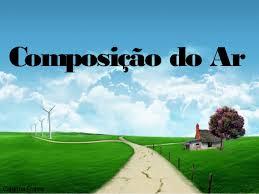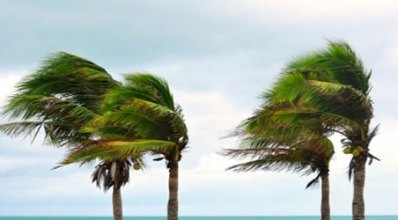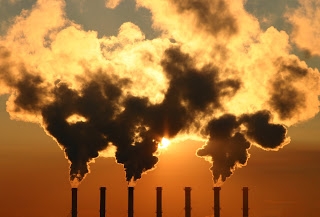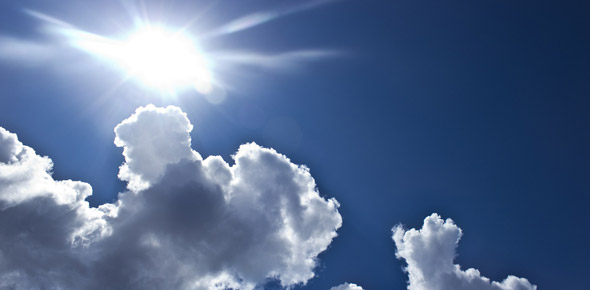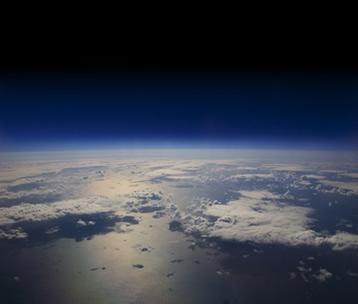O Ar

- 1.
- O Ar E Composto por ...:
- A.
Oxigênio, nitrogênio, gás carbônico e mais seis gases.
- B.
Oxigênio apenas.
- C.
Gás Carbônico apenas
- D.
Oxigênio e nitrogênio
Correct Answer
A. Oxigênio, nitrogênio, gás carbônico e mais seis gases.Explanation
The correct answer is "oxigênio, nitrogênio, gás carbônico e mais seis gases." This answer states that the air is composed of oxygen, nitrogen, carbon dioxide, and six other gases.Rate this question:
- 2.
- O Que É Ar Atmosférico?
- A.
É um conjunto visível, de vários gases, e que não possui cheiro, cor e gosto.
- B.
É um conjunto de gases que envolvem a Terra, possui cheiro, cor e gosto
- C.
É um conjunto de gases que envolvem a Terra, não possui cheiro, cor e gosto
- D.
É o ciclo hidrológico
Correct Answer
C. É um conjunto de gases que envolvem a Terra, não possui cheiro, cor e gostoExplanation
The correct answer states that the atmospheric air is a combination of gases that surround the Earth and it does not have any smell, color, or taste. This explanation accurately describes the characteristics of the atmospheric air, emphasizing that it is a mixture of gases and highlighting its lack of sensory attributes.Rate this question:
- 3.
- A Circulação Atmosférica ocorre em que camada atmosférica?
- A.
Termosfera
- B.
Estratosfera
- C.
Mesosfera
- D.
Troposfera
Correct Answer
D. TroposferaExplanation
A circulação atmosférica ocorre na troposfera. A troposfera é a camada mais baixa da atmosfera, que se estende desde a superfície da Terra até aproximadamente 12 quilômetros de altitude. É nesta camada que ocorrem os fenômenos meteorológicos, como a formação de nuvens, a ocorrência de chuvas e a circulação dos ventos. A circulação atmosférica na troposfera é impulsionada principalmente pela diferença de temperatura entre os polos e o equador, resultando em correntes de ar e sistemas de alta e baixa pressão.Rate this question:
- 4.
- Aperte a frase abaixo que está errada. Falando sobre `` Como a poluição do ar pode ser definida``:
- A.
Presença de substâncias provenientes de atividades humanas ou da própria natureza que podem colocar em risco a qualidade de vida dos seres vivos
- B.
Vestígios deixados pelos Seres Humanos que consequentemente afeta o ar.
Correct Answer
A. Presença de substâncias provenientes de atividades humanas ou da própria natureza que podem colocar em risco a qualidade de vida dos seres vivosExplanation
The correct answer is "Vestígios deixados pelos Seres Humanos que consequentemente afeta o ar." This statement is incorrect because it suggests that the presence of traces left by humans affects the air, which is not a valid definition of air pollution. Air pollution is defined as the presence of substances from human activities or nature that can endanger the quality of life for living beings.Rate this question:
- 5.
- Qual das alternativas abaixo está correta? ``Cidade do mundo com o ar mais limpo``
- A.
Cabo Frio (Brasil), Rio De Janeiro (Brasil), Calgary (Canadá) .
- B.
Calgary (Canadá), Honolulu (Estados Unidos), Helsinque (Finlândia), Wellington (Nova Zelândia), Mineápolis (Estados Unidos) e Adelaide (Austrália).
Correct Answer
B. Calgary (Canadá), Honolulu (Estados Unidos), Helsinque (Finlândia), Wellington (Nova Zelândia), Mineápolis (Estados Unidos) e Adelaide (Austrália).Explanation
The correct answer lists several cities from different countries, including Calgary (Canada), Honolulu (United States), Helsinki (Finland), Wellington (New Zealand), Minneapolis (United States), and Adelaide (Australia). These cities are considered to have the cleanest air in the world.Rate this question:
- 6.
- Os Poluentes Atmosféricos podem ser divididos em dois grandes grupos, quais são ?
- A.
Poluição Atmosférica
- B.
Os poluentes terciários e os poluentes secundários
- C.
Os poluentes primários e os poluentes destruidores
- D.
Os poluentes primários e os poluentes secundários.
Correct Answer
D. Os poluentes primários e os poluentes secundários.Explanation
The correct answer is "Os poluentes primários e os poluentes secundários." This is because atmospheric pollutants can be classified into two main groups: primary pollutants and secondary pollutants. Primary pollutants are directly emitted into the atmosphere from sources such as factories, vehicles, and power plants. Secondary pollutants, on the other hand, are formed in the atmosphere through chemical reactions involving primary pollutants and other atmospheric components. Therefore, the correct answer is that atmospheric pollutants can be divided into primary pollutants and secondary pollutants.Rate this question:
- 7.
- Quando há períodos com baixa umidade e pouco vento, é comum vermos cidades com maior concentração de poluentes.
- A.
Verdadeiro
- B.
Falso
Correct Answer
A. VerdadeiroExplanation
When there are periods of low humidity and little wind, it is common to see cities with a higher concentration of pollutants. This is because low humidity and lack of wind can contribute to the stagnation of pollutants in the air, leading to higher levels of pollution in urban areas.Rate this question:
- 8.
- Qual a resposta correta da quantidade de % que cada composição natural do ar possui?
- A.
Azoto 78%, Oxigênio 21%, Dióxido de carbono, vapor de água e outros gases 1%
- B.
Azoto 1,5%, Oxigênio 70,5 . Dióxido de carbono, vapor de água e outros gases 28%
Correct Answer
A. Azoto 78%, Oxigênio 21%, Dióxido de carbono, vapor de água e outros gases 1%Explanation
The correct answer is Azoto 78%, Oxigênio 21%, Dióxido de carbono, vapor de água e outros gases 1%. This answer states that nitrogen makes up 78% of the natural composition of air, oxygen makes up 21%, and carbon dioxide, water vapor, and other gases make up 1%.Rate this question:
- 9.
- Define o que é massa de ar em meteorologia:
- A.
São as quantidades de poluições que ocorre numa certa população e que afeta o ar
- B.
É um volume de ar definido pela sua temperatura e teor de vapor de água
- C.
São poluições na atmosfera
- D.
É quando ocorre o movimento de ar na atmosfera
Correct Answer
B. É um volume de ar definido pela sua temperatura e teor de vapor de águaExplanation
A massa de ar em meteorologia é definida como um volume de ar que possui características específicas, como temperatura e teor de vapor de água. Essas características influenciam diretamente as condições climáticas e a formação de fenômenos meteorológicos. Portanto, a resposta correta é que a massa de ar é um volume de ar definido pela sua temperatura e teor de vapor de água.Rate this question:
- 10.
- As Propriedades físicas que caracterizam o ar que respiramos são..:
- A.
Poluição, massa e expansão.
- B.
Pressão atmosférica apenas.
- C.
O volume apenas.
- D.
O volume, a massa, a densidade, pressão atmosférica, contração e expansão.
Correct Answer
D. O volume, a massa, a densidade, pressão atmosférica, contração e expansão.Explanation
The correct answer is "O volume, a massa, a densidade, pressão atmosférica, contração e expansão." This answer is correct because it includes all the physical properties that characterize the air we breathe. These properties include volume, mass, density, atmospheric pressure, contraction, and expansion.Rate this question:
- 11.
- O Ar se apresenta em que estado? Porque?
- A.
Sólido apenas
- B.
Líquido. Pois é uma mistura de água com ar.
- C.
Gasoso. Pois é uma mistura de gases
Correct Answer
C. Gasoso. Pois é uma mistura de gasesExplanation
The correct answer is gasoso because air is a mixture of gases, such as nitrogen, oxygen, carbon dioxide, and others. These gases are in a gaseous state at normal atmospheric conditions, which is why air is considered to be in a gas state.Rate this question:
- 12.
- Qual a Importância do Ar para o Ser Humano
- A.
Além da questão da respiração de todo ser vivo porque o ar contém oxigênio para todo processo de produção de energia, o ar atmosférico é o elemento de apoio à movimentação de toda aeronave e o meio de manifestação dos fenômenos meteorológicos. A movimentação do ar atmosférico fornece energia eólica
- B.
E importante pois, o ser Humano necessita dele.
- C.
Pois faz parte do meio ambiente.
Correct Answer
A. Além da questão da respiração de todo ser vivo porque o ar contém oxigênio para todo processo de produção de energia, o ar atmosférico é o elemento de apoio à movimentação de toda aeronave e o meio de manifestação dos fenômenos meteorológicos. A movimentação do ar atmosférico fornece energia eólicaExplanation
The air is important for human beings because it contains oxygen, which is essential for the production of energy through respiration. Additionally, the atmospheric air supports the movement of aircraft and is the medium for meteorological phenomena. The movement of atmospheric air also provides wind energy. Furthermore, air is a crucial component of the environment, making it essential for human survival.Rate this question:
- 13.
- Quais são os tipos de massa de ar?
- A.
Massas equatoriais e massas polares.
- B.
Massas equatoriais, massas tropicais e massas polares
- C.
Massas tropicais e massas equatoriais
- D.
Massas tropicais e massas polares
Correct Answer
B. Massas equatoriais, massas tropicais e massas polaresExplanation
The correct answer is "Massas equatoriais, massas tropicais e massas polares". This answer is correct because it includes all three types of air masses: equatorial, tropical, and polar. These air masses are defined by their origin and characteristics, such as temperature and humidity. Equatorial air masses form near the equator and are warm and humid, tropical air masses form in the tropics and are warm and dry, and polar air masses form near the poles and are cold and dry.Rate this question:
- 14.
- Marque a alternativa que é mito sobre ``Mitos sobre a poluição do ar``.
- A.
Poluição atmosférica pode trazer sérios prejuízos à saúde ocular
- B.
Poluição atmosférica nós prejudica em vários casos.
- C.
Lidar com a poluição é coisa para os governos e as autoridades internacionais.
Correct Answer
C. Lidar com a poluição é coisa para os governos e as autoridades internacionais.Explanation
The statement "Lidar com a poluição é coisa para os governos e as autoridades internacionais" is a myth about air pollution. It suggests that only governments and international authorities are responsible for dealing with pollution, which is not true. Everyone has a role to play in reducing pollution and taking care of the environment. Individuals, communities, and organizations also have a responsibility to take action and make changes to reduce pollution and protect the air quality.Rate this question:
- 15.
- Sem o ar o Ser Humano morre? E ser humano ficar sem a água também morre?
- A.
Tudo Sim
- B.
Um não, Um sim
Correct Answer
A. Tudo SimExplanation
Without air, human beings cannot survive. Oxygen is necessary for the functioning of our respiratory system and for the production of energy in our cells. Without air, we would suffocate and eventually die. Similarly, without water, human beings cannot survive either. Water is essential for various bodily functions such as digestion, circulation, and temperature regulation. It also helps in the removal of waste products from our body. Without water, dehydration would occur, leading to organ failure and eventually death.Rate this question:
- 16.
- Na verdade o que é ar em si?
- A.
O ar é o resultado da mistura de gases que compõem a atmosfera Terrestre
- B.
O ar é um tipo de co²
- C.
É um conjunto de gases, e que pode ser visto
Correct Answer
A. O ar é o resultado da mistura de gases que compõem a atmosfera TerrestreExplanation
The correct answer explains that air is the result of the mixture of gases that make up the Earth's atmosphere. This means that air is not just one specific gas like CO2, but rather a combination of different gases. Additionally, the answer states that air can be seen, implying that it is a visible substance.Rate this question:
Quiz Review Timeline +
Our quizzes are rigorously reviewed, monitored and continuously updated by our expert board to maintain accuracy, relevance, and timeliness.
-
Current Version
-
Mar 22, 2023Quiz Edited by
ProProfs Editorial Team -
Sep 25, 2015Quiz Created by
Matheusvieira
 Back to top
Back to top



